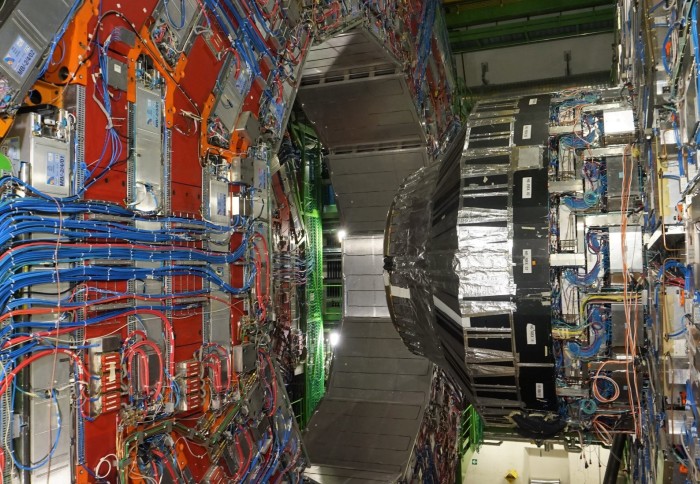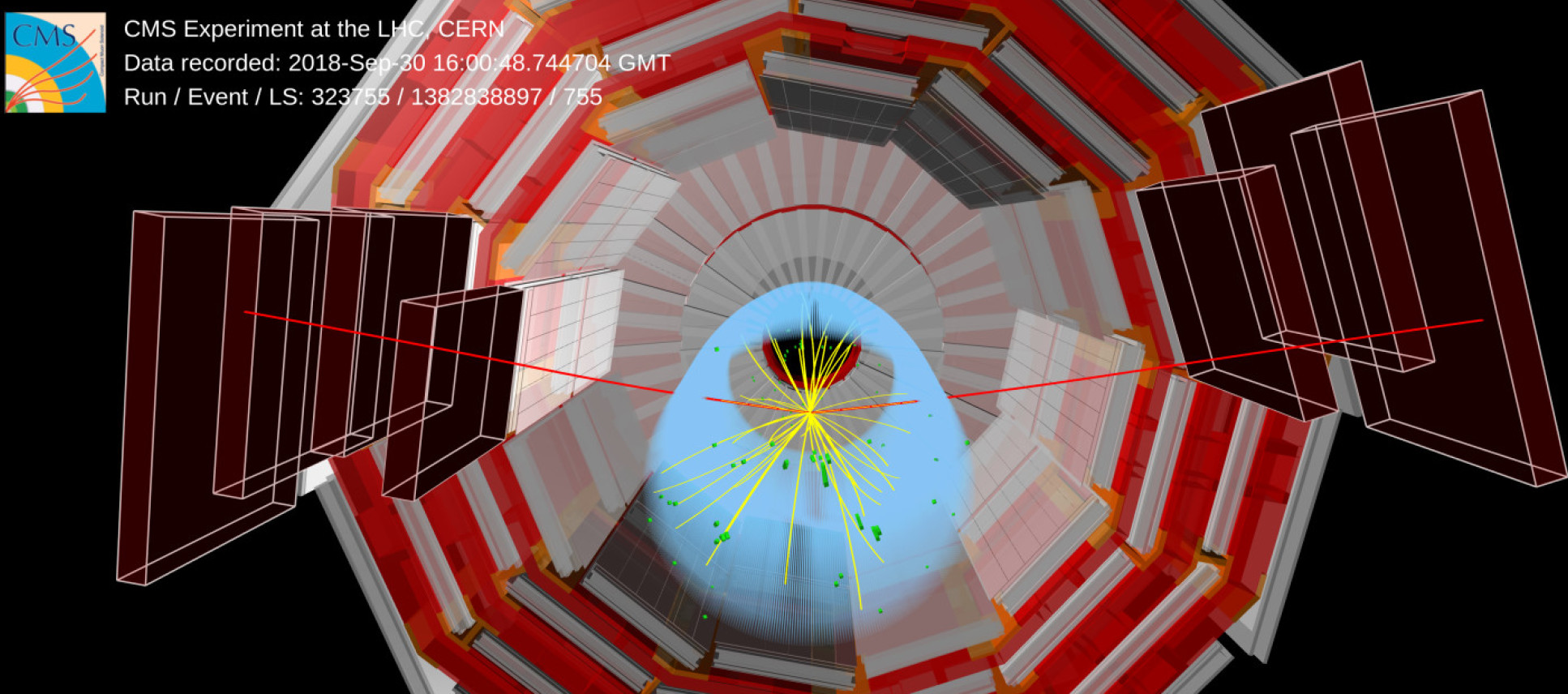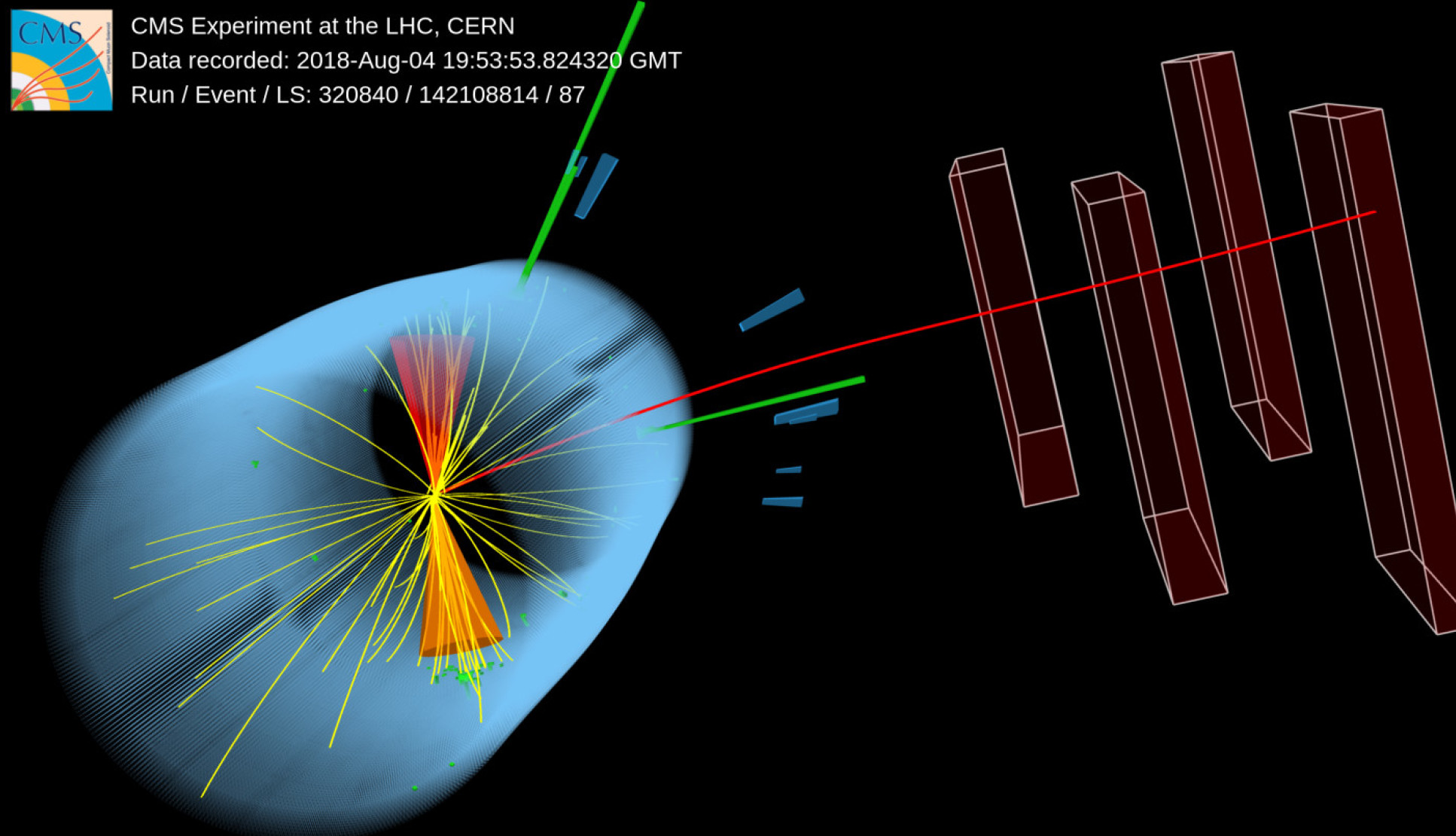Rare Higgs boson events allow researchers to probe deeper mysteries of physics

The CMS detector
The first of a new kind of Higgs boson events have been detected at the Large Hadron Collider, refining the search for new physics.
The discovery of the Higgs boson, which gives all other particles mass, completed the ‘Standard Model’ of particle physics. However, there are some aspects of physics researchers know lie beyond the Standard Model – such as Dark Matter and how gravity works.
The Higgs boson discovery was a beginning, not an end, as the Higgs provides a unique portal onto the new physics that we know has to exist. Professor Gavin Davies
Since its discovery in 2012, scientists have been gathering ever-more detailed information about the Higgs boson’s characteristics, looking for any properties that do not match the predictions of the standard model, and hence where new physics might lie.
Today, scientists working on the CMS and ATLAS detectors at the Large Hadron Collider, including a large group from Imperial College London, have announced the latest findings on the Higgs boson’s properties.
For the first time, they report the Higgs boson decaying into two muons. These fundamental particles are similar to electrons, but are classified as ‘second-generation’ particles, which decay quickly and are not present in normal matter.
Rare phenomenon
Higgs bosons are created when two protons smash together at almost the speed of light in the Large Hardon Collider, but are unstable, ‘decaying’ into other particles they have interacted with. The decay into a pair of muons only occurs for one in every 5,000 Higgs bosons produced.
This rare phenomenon has been difficult to detect as muons are relatively light, meaning they interact weakly with Higgs bosons. The discovery required lots of measurements, sophisticated computer hardware and machine learning algorithms to detect the signature.

Professor Gavin Davies, from the Department of Physics at Imperial, said: “The Higgs boson discovery was a beginning, not an end, as the Higgs provides a unique portal onto the new physics that we know has to exist. Characterising the Higgs is a very hot topic that drives a large part of the particle physics activities worldwide.”
There are two main ways researchers are probing the properties of the Higgs boson for deviations from the Standard Model of particle physics. One is to search for extremely rare processes – decays that are sensitive to interactions of the Higgs boson with new particles. The new muon pair decay is one such process.
The other way is to get ever-more precise measurements of known couplings. The Imperial team have been leading this for another Higgs boson decay that results in two photons – particles of light. They recently looked at all the data gathered from the CMS detector from 2016 to 2018 to get the most precise measurements of Higgs boson two-photon decay to date.

The next phase
Imperial physicists were critical to overall design, construction and operation of the CMS detector, and continue to play a leading role in boosting its abilities to detect and sort data through hardware and software upgrades, as well as on analysis of the results.
Leader of the Higgs CMS group Dr Nicholas Wardle, from the Department of Physics at Imperial, said: “Neither of these results would have been possible without the excellent calorimetry, trigger or tracking sub-systems at CMS. The UK, in particular Imperial’s high-energy physics group, plays a huge role in the design and construction of these systems.”
So far, all the results all agree with the standard model predictions. However, the LHC is gearing up for its next experimental run after a series of upgrades, which will produce many more Higgs bosons, allowing even more data to be gathered and analysed.
The CMS and ATLAS collaborations both have members from UK universities and the STFC’s Rutherford Appleton Laboratory. UK institutes have been members of these collaborations since their very inception and inform part of the design, building and current operation of these huge detectors.
Article supporters
Article text (excluding photos or graphics) © Imperial College London.
Photos and graphics subject to third party copyright used with permission or © Imperial College London.
Reporter
Hayley Dunning
Communications Division